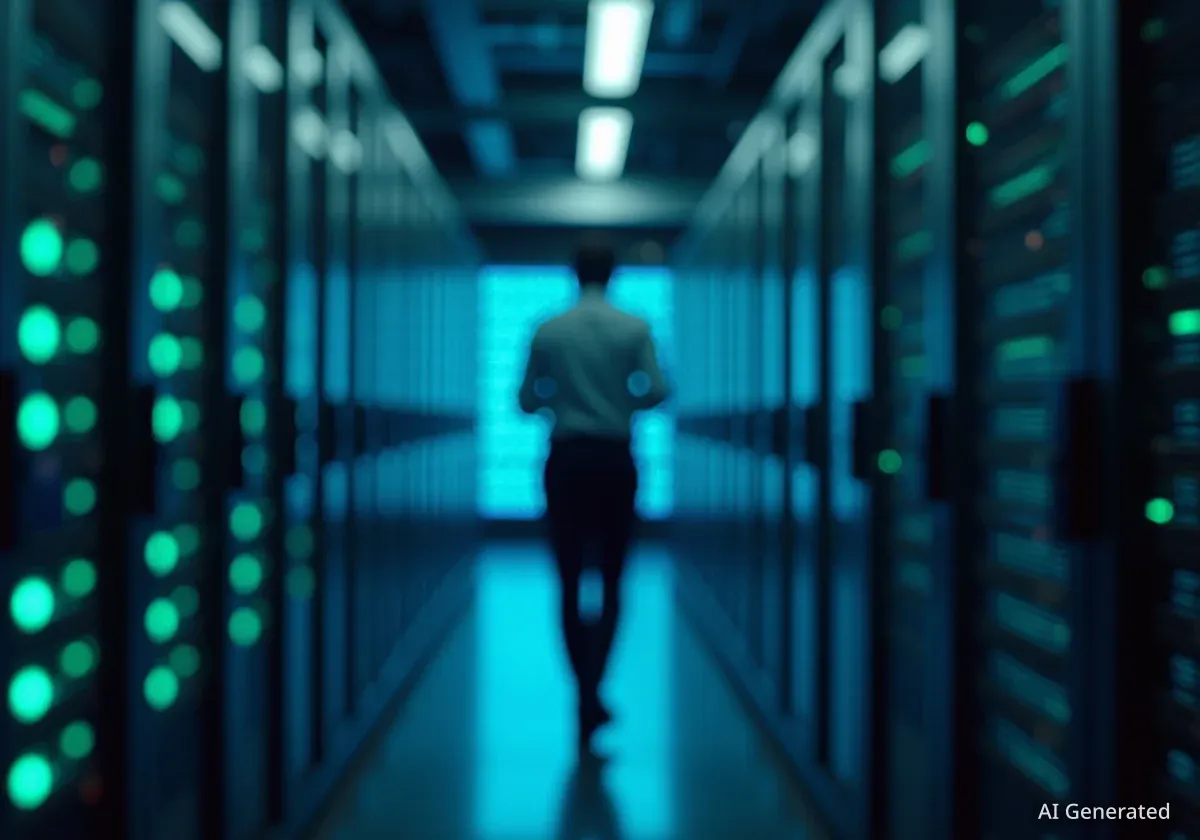In a market overwhelmingly bullish on Nvidia Corp., senior analyst Jay Goldberg of Seaport Global Securities maintains a rare 'sell' rating on the chipmaker. Goldberg, the sole bear among 80 analysts, expresses skepticism about the long-term sustainability of the current AI boom, drawing parallels to the dot-com bubble of the late 1990s and early 2000s.
Key Takeaways
- Jay Goldberg is the only analyst with a 'sell' rating on Nvidia among 80 covering the company.
- He compares the current AI spending spree to the dot-com bubble, anticipating a market correction.
- Nvidia's stock has surged over 3,000% since 2020, making it the top S&P 500 performer.
- Goldberg questions where additional upside can come from, given Nvidia's already high valuation and market saturation.
- Concerns include massive capital expenditures by tech giants and the need for significant incremental electricity for new data centers.
A Lone Voice Against the Tide
Jay Goldberg, a 54-year-old analyst based in San Francisco, finds himself in a distinct position on Wall Street. Despite Nvidia's meteoric rise, his analysis points to significant risks. He believes the potential for negative outcomes outweighs the potential for further gains for the chip giant.
There are 80 analysts who actively cover Nvidia. Of these, 73 recommend buying the stock, while six suggest holding it. Goldberg stands alone with his 'sell' recommendation, a view he has held since initiating coverage on April 30.
Nvidia's Dominance
Nvidia's stock has climbed more than 3,000% since the beginning of 2020. This performance significantly outpaces other major companies, nearly doubling the return of Super Micro Computer Inc., its closest competitor in the S&P 500 Index over the same period.
Echoes of the Dot-Com Era
Goldberg's skepticism stems from his past experiences during the dot-com bubble. He sees strong similarities between the current AI infrastructure build-out and the telecommunications infrastructure boom of the late 1990s. During that period, companies invested heavily in anticipation of internet traffic that did not immediately materialize, leading to a market correction.
"This is not my first bubble," Goldberg stated, reflecting on his career that spans back to the early 2000s, including roles at Lazard and Deutsche Bank, and later at chipmakers Peregrine Semiconductor and Qualcomm Inc.
He argues that the massive spending on AI infrastructure might be driven by what he calls "largely psychological reasons." Eventually, he predicts, this spending will slow, causing a market reset.
The AI Spending Spree
The investment thesis around AI, according to Goldberg, is concentrated among six major technology companies: Microsoft Corp., Alphabet Inc., Amazon.com Inc., Meta Platforms Inc., Oracle Corp., and OpenAI. These companies are in a race to build out their AI capabilities, fueling immense demand for Nvidia's graphics processing units (GPUs).
The five publicly traded companies in this group are projected to allocate nearly $400 billion to capital expenditures this year. This represents an increase of over 67% compared to the previous year. OpenAI, a privately held company, has reportedly committed to spending more than $1 trillion on its AI infrastructure.
A Historical Parallel
During the dot-com bubble, companies like Cisco Systems Inc. saw their shares surge due to the telecommunications infrastructure build-out. However, when the anticipated internet traffic did not materialize, Cisco's stock was severely impacted. More than two decades later, Cisco's stock price has not yet reached its 2000 peak, serving as a cautionary tale for current market exuberance.
Questions of Upside and Capacity
Despite Goldberg's 'sell' rating, Nvidia's stock has continued its ascent, rising over 70% since his initial coverage. The average analyst price target for Nvidia currently stands at $220, suggesting an 18% upside from its recent closing price of $186.26. Goldberg's price target, however, remains at $100, the lowest on Wall Street.
Bullish analysts, such as Frank Lee of HSBC, who recently raised his rating to 'buy' with a $320 price target, foresee significant growth in the AI accelerator market beyond Nvidia's largest customers. This view suggests a scenario where Nvidia's AI processing chips are essentially sold out. Goldberg questions where additional upside could come from in such a saturated market.
Energy and Infrastructure Concerns
Goldberg also highlights practical challenges that could impact the AI sector. A significant concern is the enormous amount of incremental electricity required to power new data centers. The source and availability of this energy are not yet clear.
He also points to a growing leverage within the development of these data centers. "Once you trace down where all these GPUs are going you get into the weeds of the neoclouds and all these electricity and property deals that are taking place," he explained. This complex web of dependencies could create vulnerabilities, where the failure of one obscure company could cascade throughout the supply chain.
- Electricity Demand: New AI data centers require substantial power, posing a challenge for existing energy grids.
- Supply Chain Risks: The intricate network of companies involved in AI infrastructure development could face cascading failures if one part of the chain falters.
- Market Concentration: The reliance on spending from a few major tech giants creates a concentrated risk for Nvidia.
Even among bullish investors, there is increasing concern about the intensity of AI enthusiasm. David Solomon, CEO of Goldman Sachs, has drawn comparisons to the dot-com euphoria. A recent Bank of America survey indicated a record share of global fund managers perceive a bubble in AI stocks. Even OpenAI CEO Sam Altman acknowledged the possibility of an AI bubble.
Goldberg, who admires Nvidia and its CEO Jensen Huang, clarifies that his 'sell' rating implies the stock will underperform its peers, such as Broadcom, Qualcomm, and Advanced Micro Devices Inc., rather than suggesting investors should short it.





